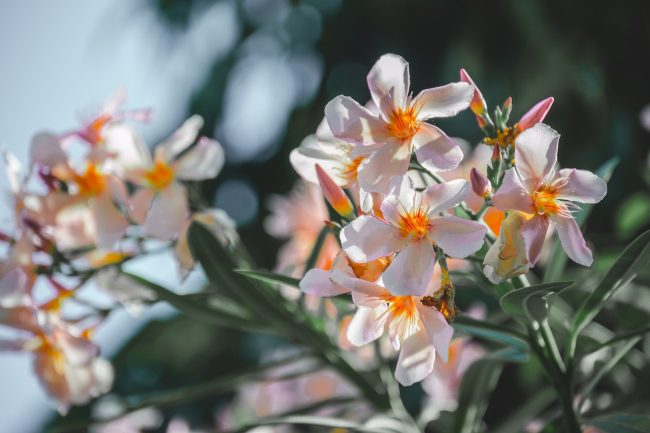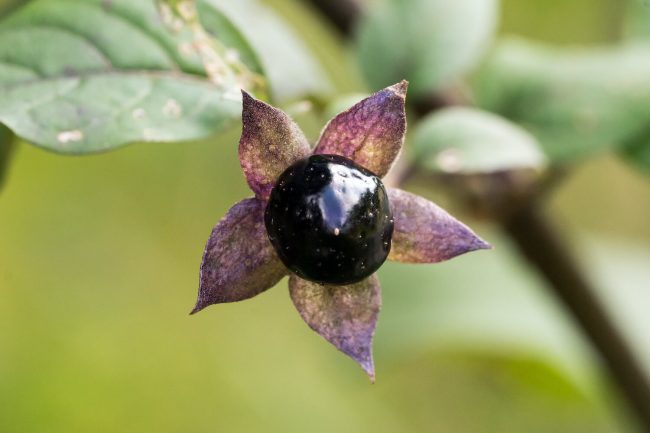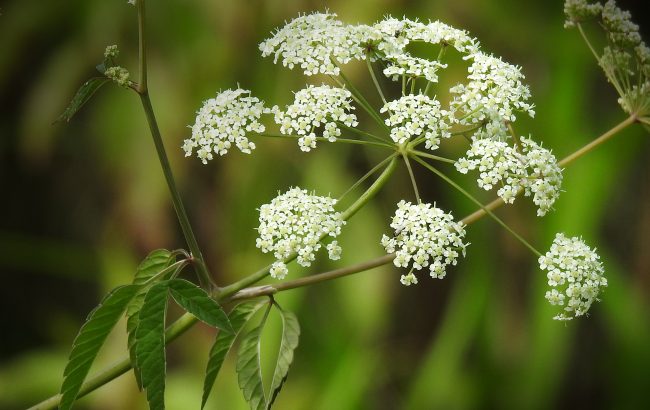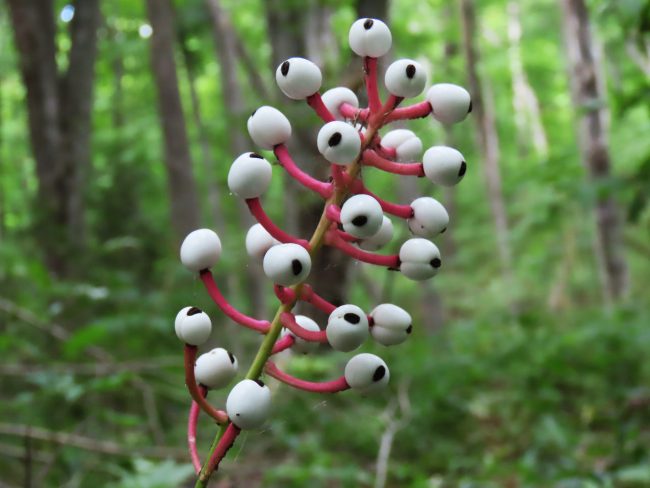11 Dangerous Fungi and Plants: If You Ever See This, Ask for Help!
Today we’re talking about the secret world of dangerous fungi and plants that might be lurking right under our noses. You see, Mother Nature, in all her mysterious brilliance, has created some seriously menacing organisms.
In this article, we’ll learn to recognize the most perilous fungi and plants that might live near your home. So, if you ever see this in your backyard, ask for help to remove it.
11 Dangerous Fungi and Plants that might leave near your home
It’s no secret that nature, in all its beauty, also harbors certain dangers. Among the vibrant flowers, towering trees, and lush greenery, some unwelcome species can take up residence. Some might have that unmistakable “yuck” factor that keeps you away from them, but others can masquerade as innocent beauties, and when you touch them…BAM…you wish you can take that back. So let’s see what these dangerous fungi and plants are.
1. Oleander
The oleander is a popular ornamental plant known for its vibrant colors and sweet fragrance. However, it is important to be aware that this plant contains potent toxins in all its parts, making it potentially dangerous to have in your backyard.

If ingested, even small amounts of oleander can cause symptoms such as nausea, dizziness, irregular heartbeat, and in severe cases, death. This poses a risk to pets and young children who may unknowingly consume parts of the plant.
If you choose to have oleander in your backyard, exercise caution by educating yourself and others about its toxic properties, and consider placing it in areas where pets and children cannot access it easily.
2. Deadly Nightshade
Atropa belladonna, also known as Deadly Nightshade, is the infamous femme fatale of the plant kingdom. Known by its more ominous moniker, “Deadly Nightshade,” this plant with distinct purple flowers and shiny black berries is highly toxic, making lots of cameos in Hollywood flicks and spine-chilling novels alike.
You’ve probably heard of it already. Mythology and folklore often depict witches and sorceresses using belladonna in their potions and brews. This association with the mystical and supernatural has only added to the plant’s allure.

In Renaissance Italy, women used a tincture derived from belladonna berries to dilate their pupils, which was considered a sign of beauty. Hence, the name “belladonna,” which means “beautiful lady” in Italian. Phew, imagine that! They were quite brave women.
Talking about history facts, check out these 15 Bone-Chilling Titanic Facts No One Knew
So, let’s get back to deadly nightshade! Given its toxic properties, having Atropa belladonna in your backyard can pose a significant risk, especially if you have children or pets that might accidentally touch the plant or consume it.
Belladonna contains tropane alkaloids, which are known to induce hallucinations and delirium when ingested. Historically, some cultures have used the plant in rituals and ceremonies for its mind-altering effects.
Therefore, it is advisable to avoid having Atropa belladonna in your backyard to ensure the safety of your family and pets.
3. Water Hemlock
Water Hemlock is the wastefully extravagant cousin of the carrot and parsley. Belonging to the same Apiaceae family, this apparently harmless wildflower packs a mean punch, being considered one of the most toxic plants in North America. The plant bears small, white flowers that resemble those of other, less harmful plants in the same family, such as Queen Anne’s Lace.

Water Hemlock has been recognized for its poisonous nature since ancient times. The Greek philosopher Socrates famously drank a concoction made from a related species, the poison hemlock (Conium maculatum).
The toxicity of Water Hemlock is primarily due to the compound cicutoxin, which is found in all parts of the plant, particularly the roots. Ingestion of even a small amount can lead to severe symptoms, such as seizures, nausea, vomiting, and in some cases, death. It is crucial to avoid consuming any part of the Water Hemlock plant and to exercise caution when identifying it.
Therefore, as fascinating as the Water Hemlock can be, it is crucial to exercise caution and respect its highly toxic nature. However, luckily for you, the plant loves to live in the wild. So, it’s highly unlikely you’ll have it in your backyard.
4. Autumn Skullcap
Autumn Skullcap is a small, brownish-orange mushroom that is easy to overlook. It is highly toxic, containing amatoxins, which can cause severe liver and kidney damage when ingested, often leading to fatal consequences. Symptoms of poisoning may include gastrointestinal issues such as vomiting, diarrhea, and abdominal pain, followed by signs of liver and kidney failure.
Amatoxins found in Autumn Skullcap are heat-stable, meaning that cooking the mushroom does not destroy the toxins. So, it’s of the utmost importance to avoid consumption of this fungus.
Autumn Skullcap is found across the Northern Hemisphere, including North America, Europe, and Asia, living in forests, on decaying wood. So, it’s highly unlikely that you will find it in your backyard. However, beware of any fungus that you might find on your hikes and forest explorations. This is one of the most dangerous fungi and plants on our list.
5. The Death Cap
Well, the name says it all. This Darth Vader of the mushroom world is highly toxic and responsible for the majority of fatal mushroom poisonings worldwide. Its appearance can be deceiving, as it closely resembles some edible mushroom species, making proper identification crucial.
The Death Cap contains potent toxins called amatoxins, which, when ingested, can cause severe liver and kidney damage, often leading to death. Symptoms of poisoning may include gastrointestinal issues such as vomiting, diarrhea, and abdominal pain, followed by signs of liver and kidney failure.
The Death Cap is native to Europe but has been introduced to other regions, including North America and Australia. It can be found in a variety of habitats, such as forests and grasslands. It forms symbiotic relationships with the roots of certain trees, such as oaks and pines. This association helps the fungus obtain nutrients from the tree while providing the tree with water and minerals.
So, if you go foraging, steer clear of the Death Cap!
6. Dangerous fungi and plants: The manchineel tree
This apparently harmless-looking tree native to the Caribbean, Central America, and parts of South America has a menacing nickname – “the apple of death”.
You see, it produces small, apple-like fruits that are extremely poisonous. Consumption of the fruit can cause severe gastrointestinal distress, and in some cases, it can be fatal.
Not just the fruit, but all parts of the manchineel tree are toxic, including the bark, leaves, and sap. The milky sap contains strong irritants that can cause blisters and dermatitis upon contact with the skin. In fact, the manchineel tree is so toxic that standing under it during rain can cause skin irritation due to the sap mixing with rainwater and dripping onto the skin.
Burning the wood of a manchineel tree can be dangerous as well. The smoke it gives out can contain toxic particles that can cause eye and respiratory irritation.
However, despite its notorious reputation, the manchineel tree plays an essential role in its native ecosystems. It helps prevent beach erosion by stabilizing sand dunes and providing shelter for various wildlife species. Due to its toxicity and the dangers it poses to humans, the manchineel tree is often marked with warning signs, advising people to avoid contact with it. And you can definitely not grow it in your backyard. It’s one of the most dangerous fungi and plants on our list.
7. Dangerous fungi and plants: The Dumbcane
You probably know this one, as it is commonly grown as a houseplant. Its attractive lush leaves and ease of care make it a popular choice for indoor cultivation. However, it’s important to handle the plant with care due to its toxic sap.
You see, the sap of the dumbcane plant contains calcium oxalate crystals, which can cause intense irritation and burning sensations in the mouth, tongue, and throat if ingested. It can also cause skin irritation and allergic reactions upon contact. It is not typically lethal to humans, however, when consumed, it can lead to swelling, difficulty in speaking or swallowing, drooling, and temporary loss of voice. All in all, dumbcane can be particularly dangerous for pets or children if they chew or bite the plant.
So, if you decide to grow this plant in your home, keep it out of reach of children and pets to prevent accidental ingestion or contact. If you come into contact with the sap, wash the affected area thoroughly with water and seek medical attention if symptoms persist or worsen.
Fun fact: the common name “dumbcane” refers to the temporary loss of voice or speech impairment that can occur when the plant is ingested, highlighting one of its notable effects. So, it’s in the name, folks! Take care!
8. Doll’s eye
Doll’s Eye, scientifically known as Actaea pachypoda, is a unique and quite creepy plant native to North America. Picture yourself strolling through the forest, spotting these peculiar berries perched on vibrant red stalks. This plant takes “eye-catching” to a whole new level. It’s one of the most dangerous fungi and plants on our list.

Anyways, the berries of doll’s eye contain cardiogenic toxins, particularly the compound called actein. Ingesting these berries can cause symptoms such as nausea, vomiting, stomach pain, and in some cases, cardiac disturbances. However, it is worth noting that fatalities are rare.
Despite its toxicity to humans, the berries of Doll’s Eye serve as a food source for certain wildlife species. Birds, in particular, are known to consume the berries without suffering adverse effects. However, caution should still be exercised to prevent accidental ingestion by children or pets.
In traditional medicine, certain Native American tribes used Doll’s Eye for various purposes, including as a diuretic, treatment for rheumatism, and as a remedy for sore eyes. However, we’d advise against any medicinal use. Just let it be, and make sure your kids or pets don’t come in contact with it either.
9. Dangerous fungi and plants: Rosary pea
Rosary pea, scientifically known as Abrus precatorius, is a plant that holds a notorious reputation due to its highly toxic nature. The seeds contain a potent toxin called abrin, which is considered one of the most lethal plant toxins known. Even a small amount of the toxin can be fatal if ingested. Moreover, the seed coat is tough and protects the toxin from being released during digestion, allowing it to enter the bloodstream intact.
Ingestion of Rosary Pea seeds can lead to severe gastrointestinal symptoms such as nausea, vomiting, and abdominal pain. It can also cause organ failure, internal bleeding, and in some cases, death.
Fun fact! The shiny, scarlet Rosay pea seeds adorned with a black dot are often used in jewelry or ornamental crafts. Dangerous fashion!
The seeds of Rosary Pea are also known for their remarkable uniform weight. In fact, they were historically used as standardized units of weight for precious metals in some parts of Asia.
And there’s more! Despite its extreme toxicity, certain cultures have used Rosary Pea seeds in traditional medicine for their potential therapeutic properties. However, due to the high risk associated with their use, it is strongly discouraged and not recommended.
10. Pokeweed
Well, this name’s just begging for some punny humour. But we won’t do it. No.
So, pokeweed is a toxic plant. It takes its toxicity seriously, as every part of the plant, including the roots, leaves, and berries, contains toxic substances known as phytolaccatoxin and phytolaccigenin. These substances can cause severe gastrointestinal distress, including vomiting and diarrhea, if ingested in large quantities.
Funny, dangerous fact! Small amounts of Pokeweed berries have been used in traditional cuisine. Some cultures use the plant as a remedy for conditions like rheumatism and skin disorders, and even as a source of natural dye. The dark purple berries are also a favored food source for certain bird species.
But we don’t say these as an encouragement to taste and touch the plant! No. If you have no idea how to properly prepare these berries, just leave them be. Ingesting large quantities of the plant can lead to more severe symptoms and may require medical attention.
11.Poison Ivy
This notorious plant, which bears the very word “poison” in its name, is found throughout North America and is known for its ability to adapt and thrive in various environments, including forests, fields, and even urban areas. Its leaves change color with the seasons, turning green in spring and summer, and often displaying vibrant hues of red, orange, or yellow in the fall.
It contains a substance called urushiol, which is responsible for the skin reactions it causes. Contact with any part of the plant, including leaves, stems, or roots, can result in an itchy rash, redness, swelling, and blistering. While the reaction is uncomfortable, Poison Ivy is not typically lethal.
In fact, the severity of the reaction to Poison Ivy varies among individuals. Some people may have a mild reaction, while others can experience more severe symptoms. Sensitivity to Poison Ivy can develop over time, meaning someone who initially has no reaction may become more sensitive with subsequent exposures.
Interestingly, some animals, such as deer and birds, can eat Poison Ivy without experiencing adverse effects.
As we reach the end of our journey into the world of dangerous fungi and plants, we hope you now have a newfound appreciation for the dangers that coexist in nature.
